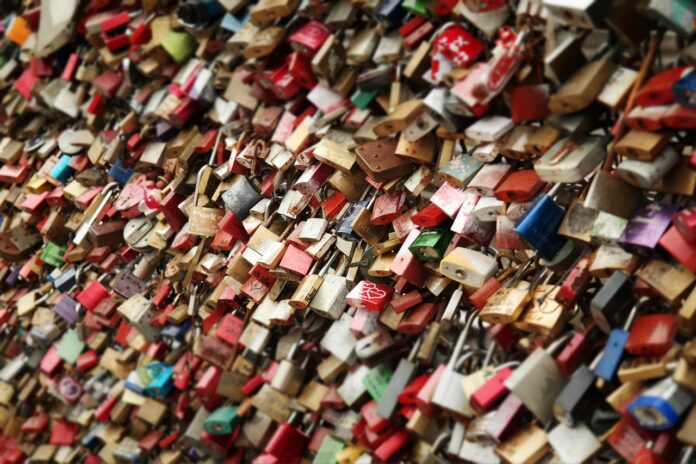In the image above, an overwhelming number of *padlocks—commonly referred to as *”love locks”**—are attached to a structure, symbolizing devotion, commitment, and the unbreakable bond between couples. This tradition, which has gained immense popularity worldwide, involves lovers writing their names or initials on a padlock, securing it onto a bridge, fence, or designated area, and then throwing away the key—signifying their undying love.
The Origin of Love Locks
Though the precise origins of love locks are debated, one of the most well-known stories traces back to Serbia during World War I. According to legend, a schoolteacher named Nada fell in love with a soldier, but he later fell for another woman in Greece, breaking her heart. The heartbroken women of the town began attaching locks to a bridge, believing it would protect their love.
In modern times, the tradition gained global popularity, especially on Paris’ Pont des Arts bridge, where thousands of locks adorned the railings. However, due to structural concerns, many cities, including Paris, have had to remove the locks periodically.
A Worldwide Trend
From the Brooklyn Bridge in New York to the Hohenzollern Bridge in Germany, love locks can be found in various romantic destinations worldwide. Some cities have even embraced the trend by providing designated areas for love locks, allowing couples to participate without causing structural damage.
Beyond Romance: A Symbol of Memories
While love locks are primarily associated with romantic love, they have also become symbols of friendship, family bonds, and even personal milestones. Many people place locks in honor of lost loved ones, as a way to commemorate significant life events, or simply as a gesture of hope.
A Controversial Tradition
Despite its sentimentality, the love lock trend has faced criticism due to environmental concerns. Discarded keys often end up in rivers, causing pollution, and the excessive weight of locks has been known to damage historical structures. As a solution, some cities now offer symbolic alternatives, such as digital love locks or special plaques where couples can inscribe their messages.
Conclusion
The image of countless love locks represents a universal desire for everlasting bonds and shared memories. Whether viewed as a romantic gesture or a cultural phenomenon, love locks continue to be a testament to human connection—one lock at a time.



